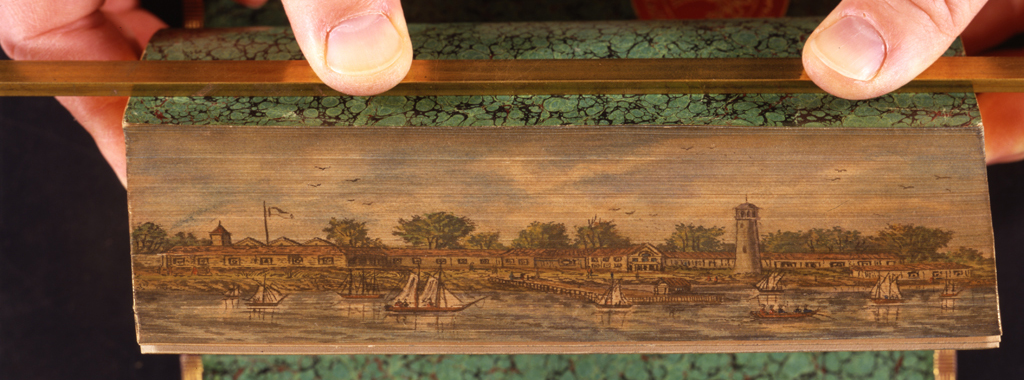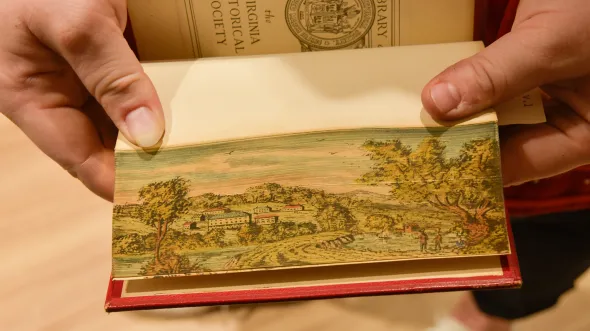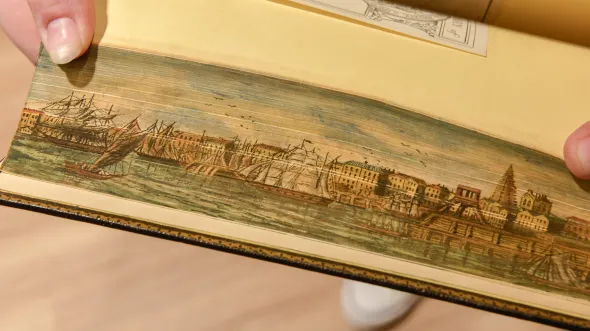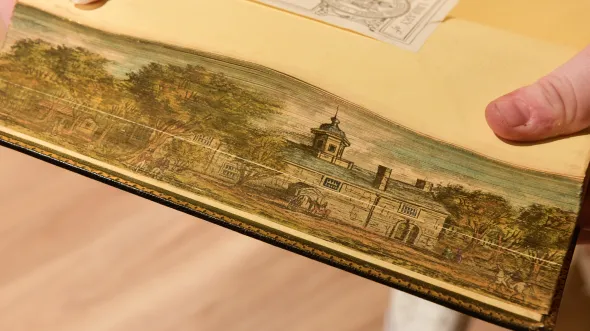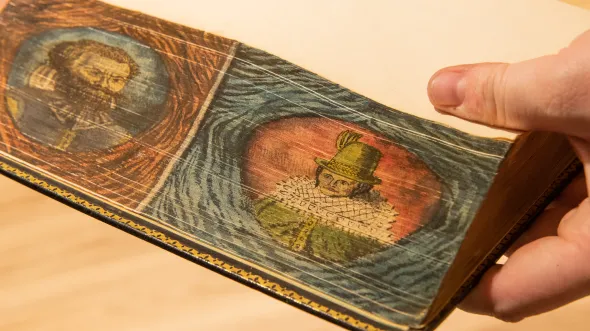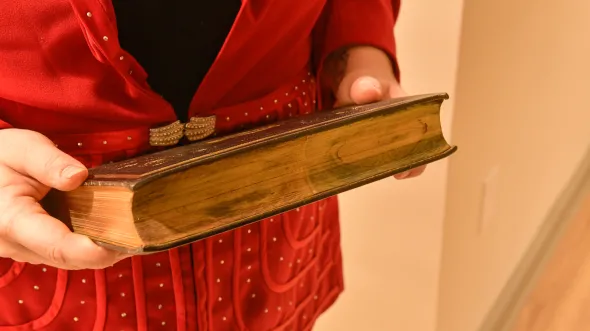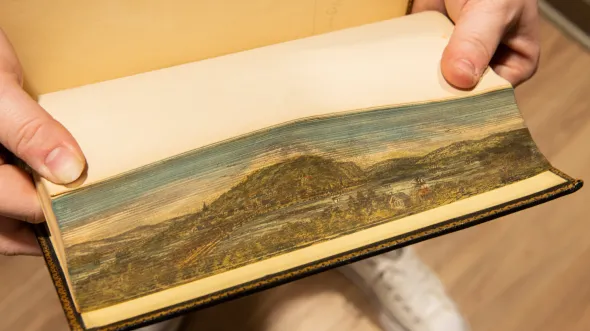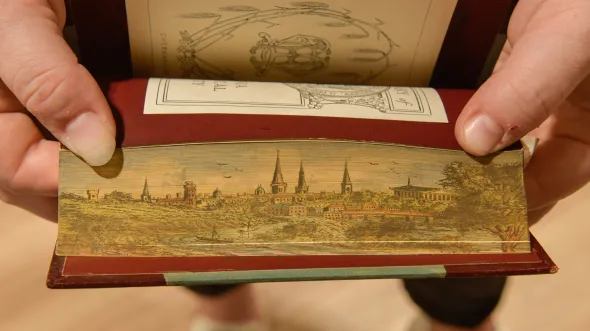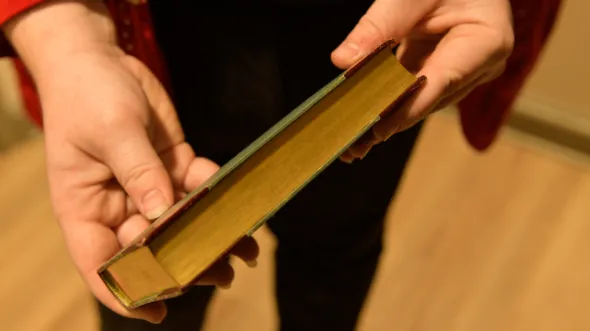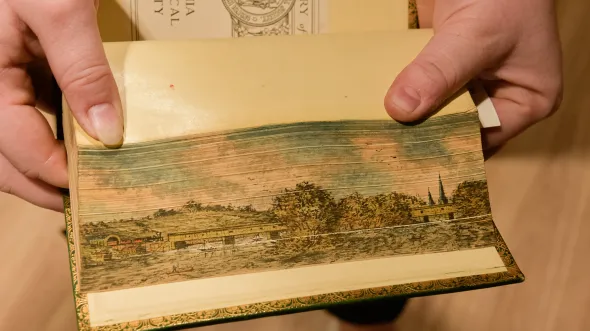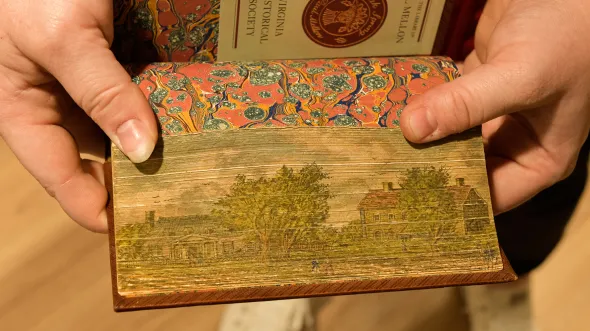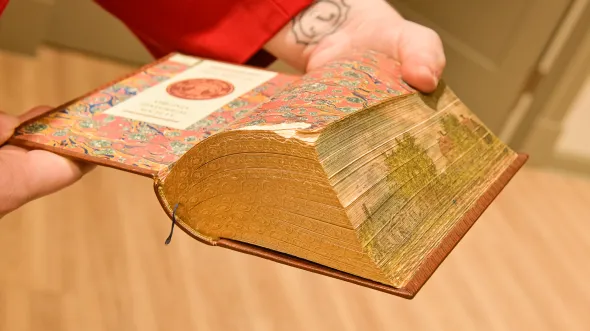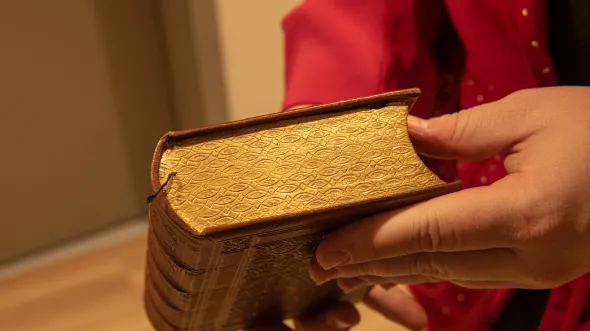Rarely are books prized as objects of art; often the content of the text, or the plates accompanying the text, are regarded with higher intrinsic value than the construction of the book. However, bookbinding is an art form in itself, and elaborate bindings may garner more interest than the actual text. Such is the case with fore-edge paintings, as often they are unique embellishments to otherwise less significant, mass-produced bound books.
Fore-edge paintings, watercolor scenes painted on the unbound edge of a book, were popularized in the seventeenth century by the Edwardses of Halifax, a family of English bookbinders. Some examples of fore-edge paintings are visible when the book is closed, although more elaborate examples are only visible by fanning the leaves, or spreading the pages. The paintings are created by clamping the fanned leaves in place to create a surface on which to paint. Once the scene is painted and has dried, the clamp is removed and the fore-edge is gilded.
Browse a selection of books with fore-edge paintings from the VMHC collections below:

